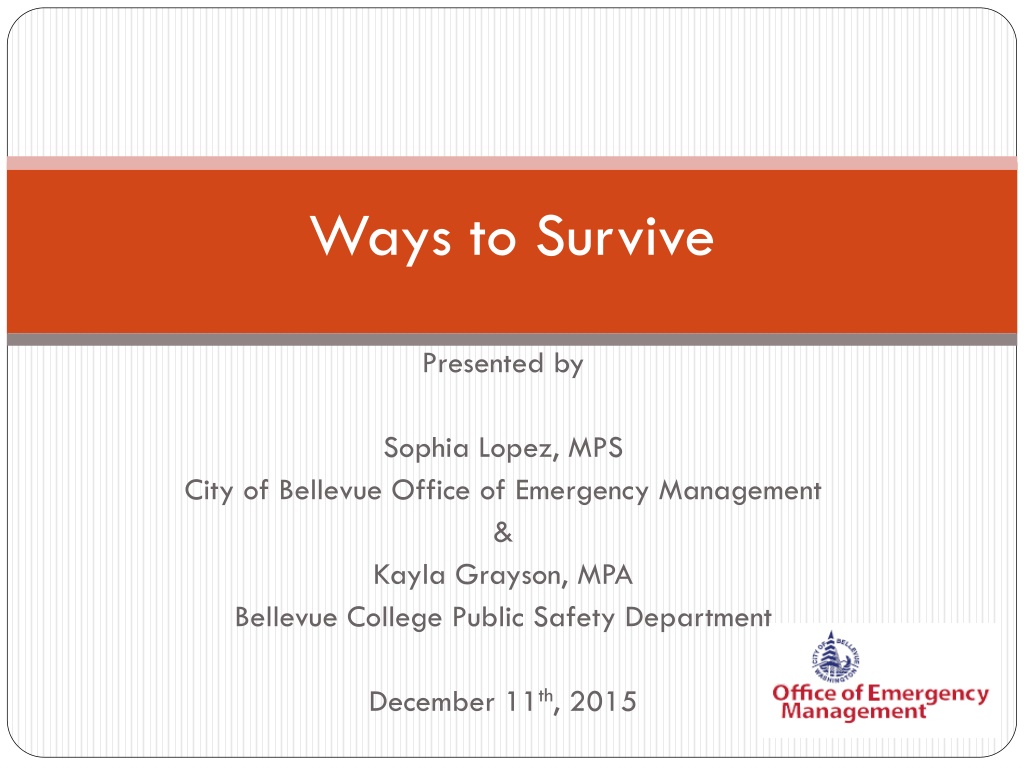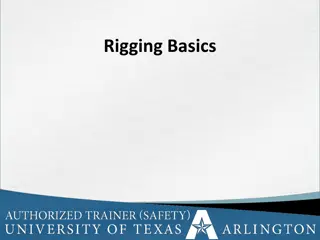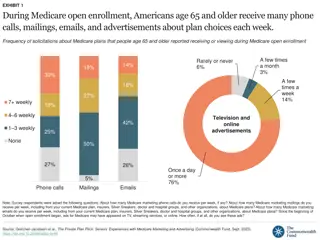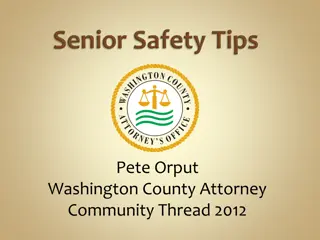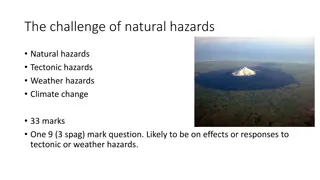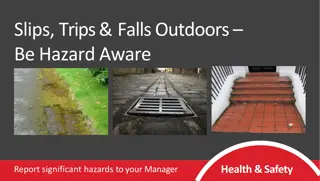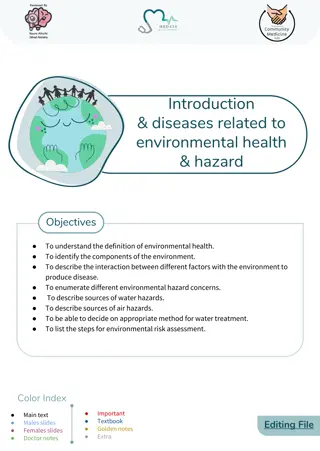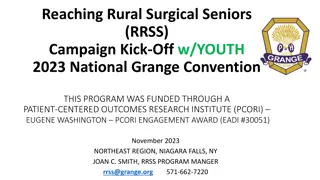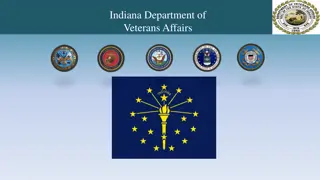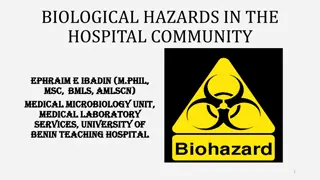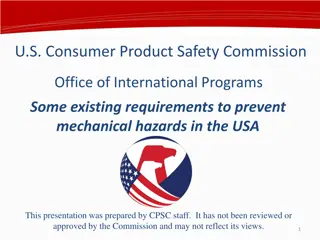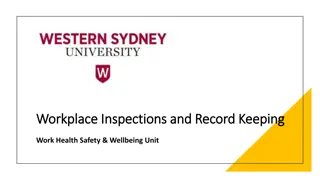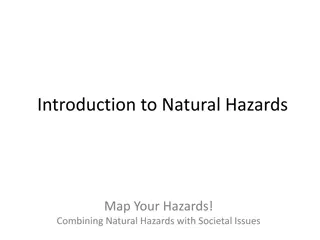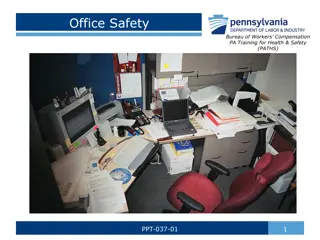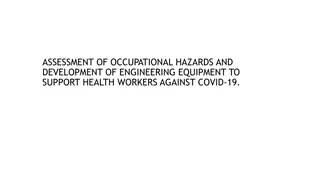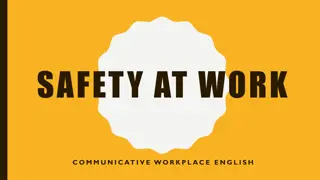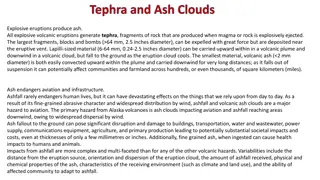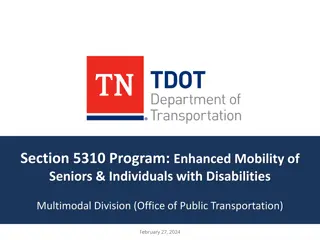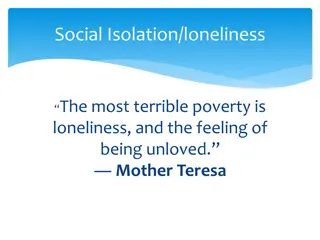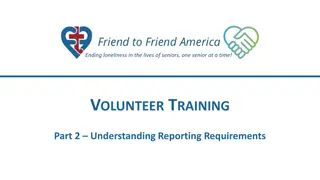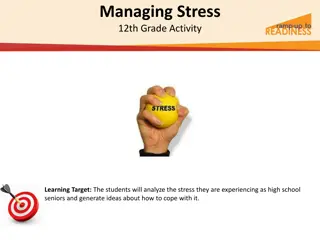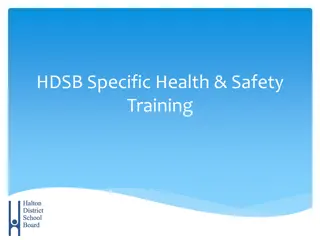Surviving Hazards: A Comprehensive Guide for Seniors
The presentation "Ways to Survive" delves into the crucial aspect of preparing seniors for emergencies and disasters. Highlighting the disproportionate impact on the elderly during crises, the content covers factors affecting their responses and emphasizes the importance of an all-hazard approach. Practical planning tips, communication strategies, and disaster preparedness steps are outlined to aid seniors in navigating challenging situations effectively.
Download Presentation

Please find below an Image/Link to download the presentation.
The content on the website is provided AS IS for your information and personal use only. It may not be sold, licensed, or shared on other websites without obtaining consent from the author. Download presentation by click this link. If you encounter any issues during the download, it is possible that the publisher has removed the file from their server.
E N D
Presentation Transcript
Ways to Survive Presented by Sophia Lopez, MPS City of Bellevue Office of Emergency Management & Kayla Grayson, MPA Bellevue College Public Safety Department December 11th, 2015
Introductions Who we are What we do PREVENT, PREPARE, RESPOND, RECOVER, AND MITIGATE Any first-hand experience you have had with a hazard or disaster.
The Hazards We Share
Why Disasters Hit the Elderly Hard Why Disasters Hit the Elderly Hard About two weeks after Hurricane Sandy hit in 2012, the New York Times reported that close to half of those who died in the storm were 65 or older. Many of these elderly victims drowned at home; others died from storm-related injuries, hypothermia and other causes.
Why are the elderly so disproportionately impacted? Brainstorm some factors associated with the aging process that might affect an older adult s ability to respond in a crisis.
The All-Hazard Approach Planning Preparation Partnership
Plan Communications Evaluate your surroundings Decide to stay or change locations Critical early decision in disasters Think of all scenarios
Planning Think of all scenarios: Where will you be? Will you be at school, on the bus, or at home? Evaluate your surroundings: House, workplace, school, frequent places Communication with your family: Contact numbers listed other than your phone Out of area contact (At least 2) Special needs that can be impacted?
Develop a Disaster Plan Where will you meet family members? Who is your out-of-State check-in contact? Will you have an extended stay? Shelter in place? Evacuate? How will you escape your home? Workplace? Place of worship? Places you volunteer? CERT Basic Training Unit 1: Disaster Preparedness What route (and several alternates) will you use to evacuate your neighborhood? Do you have transportation or need help with transportation? Did you practice your plan?
Preparation Food Water Heat Other items
What items do you need in your kit? What items do you need in your kit?
Preparation Preparation Basic Home Kit: Water: 1 gallon per person per day (7-10 days) Food: Supply of easy non-perishable food items, dietary requirements, baby food, pet food, food packets , dietary requirements Cash (Small bills; ATMs may not be working or accessible) Warmth: Clothes, coats, boots, sturdy shoes & blankets, scarves, gloves
Preparation Preparation Basic Car Kit: Radio: battery or hand cranked Jumper cables Cat litter or sand: for better tire traction Flashlights Shovel First Aid Kit Ice scraper Food Clothes Manual can opener Water Blankets or sleeping bags Basic toolkit Phone Charger Pet supplies
Preparation Other Important Items to consider: Candles Garbage bags Pen & paper/notepad Utility shut-off tools Filter masks Whistle Matches *Create the same portable kit for your car and your office.
Preparation Preparation Special needs: Medications (list with dosage and frequency) Allergies Cholesterol Dialysis Spare glasses Hearing Aids Map Teddy bears Book
Preparation Preparation Documents & Copies: Passport Driver s license Birth certificate Green card List of contact numbers Pictures of family members and pets Others you can think of
Preparation Preparation - - Pets Pets Make A Pet Emergency Plan ID your pet. Have a current photo of your pet. Make a pet emergency kit. Check out this quick list: Pet food Bottled water Medications Veterinary records Cat litter/pan Manual can opener Food dishes First aid kit and other supplies Identify shelters. www.gopetfriendly.com
Preparation - Pets Prepare Shelter For Your Pet Local emergency management office, animal shelter or animal control office If you are unable to return to your home right away, you may need to board your pet. Leaving your pet at home puts them in danger but if you have no alternative, there are some precautions you must take: Confine your pet to a safe area inside - NEVER leave your pet chained outside! Leave them loose inside your home with food and plenty of water. Place a notice outside in a visible area, advising what pets are in the house and where they are located. Provide a phone number where you or a contact can be reached as well as the name and number of your vet.
Preparation - Pets Protect Your Pet During A Disaster Bring your pets inside immediately. Have newspapers on hand for sanitary purposes. Feed animals moist or canned food so they will need less water to drink. Separate dogs and cats. If you evacuate your home, DO NOT LEAVE YOUR PETS BEHIND! If you are going to a public shelter, it is important to understand that animals may not be allowed inside. Make a back-up emergency plan in case you can't care for your animals yourself.
Preparation - Pets Caring For Your Pet After A Disaster If you leave town after a disaster, take your pets with you. Pets are unlikely to survive on their own. In the first few days after the disaster, leash your pets when they go outside. Always maintain close contact. The behavior of your pets may change after an emergency. Normally quiet and friendly pets may become aggressive or defensive. Watch animals closely. Leash dogs and place them in a fenced yard with access to shelter and water.
Partnership Know your neighbors. Vocalize your needs. Get involved.
Bellevue College Trainings Basic Preparedness Advanced Preparedness Incident Command System Safety Lead Dangerous Intruder
Bellevue College Exercises, Events and Drills Lockdowns Evacuations Fire Emergency Operations Joint Exercises Public Outreach Events
Bellevue College Equipment Crisis Response Boxes AED s First Aid Kits Safety Backpacks Fire Extinguishers Stair Chairs Alerts
Partnership Partnership Resources: Community Communication Network http://www.kingcounty.gov/healthservices/health/preparedness/VPAT/C CN.aspx Ready.gov http://www.ready.gov/make-a-plan http://www.ready.gov/animals Puget Sound Energy https://pse.com/safety/GetPrepared/Pages/default.aspx American Red Cross http://www.redcross.org/safe-in-the-sound Make It Through http://makeitthrough.org/ Build a Kit on a Shoestring Budget https://youtu.be/tSRNP8moKx0
Partnership Partnership Get Started Connect with Us City of Bellevue OEM http://www.ci.bellevue.wa.us/emergency_prepar edness.htm www.waystosurvive.org(will take you to same site as above easier to remember) Social Media www.facebook.com/BellevueOEM www.twitter.com/BvueOEM www.youtube.com/BellevueOEM
Quote of the Day It is not often that a man can make opportunities for himself. But he can put himself in such shape that when or if the opportunities come he is ready. - Theodore Roosevelt
We cant control when disasters or acts of terror happen. What we can do is be ready -- gather together, build a culture of preparedness, and be safer as a result.
THANK YOU!!!! QUESTIONS~COMMENTS~CONCERNS Sophia L. Lopez Emergency Management Coordinator Vulnerable Populations and Outreach SLopez@bellevuewa.gov O: (425) 452-4161
